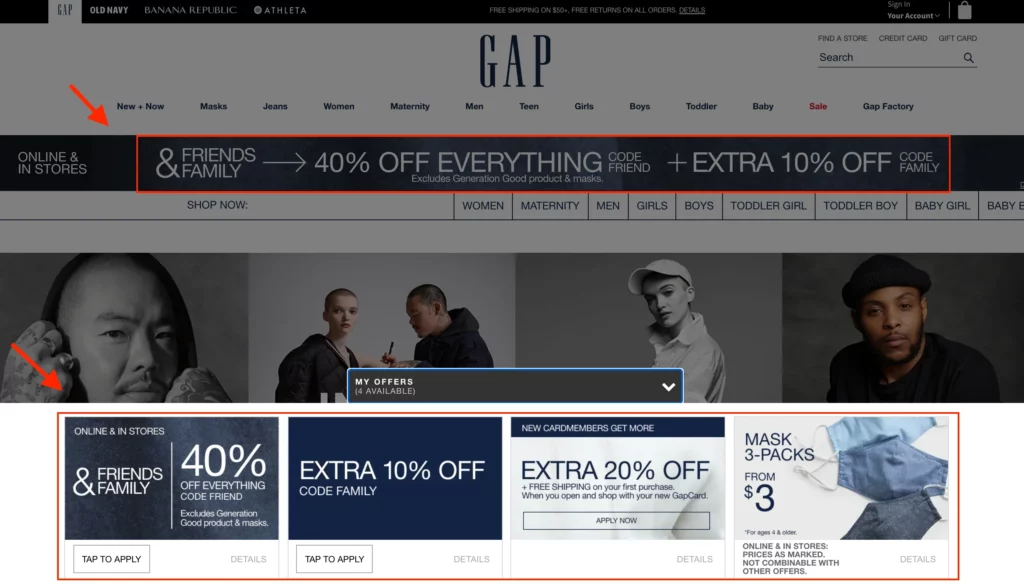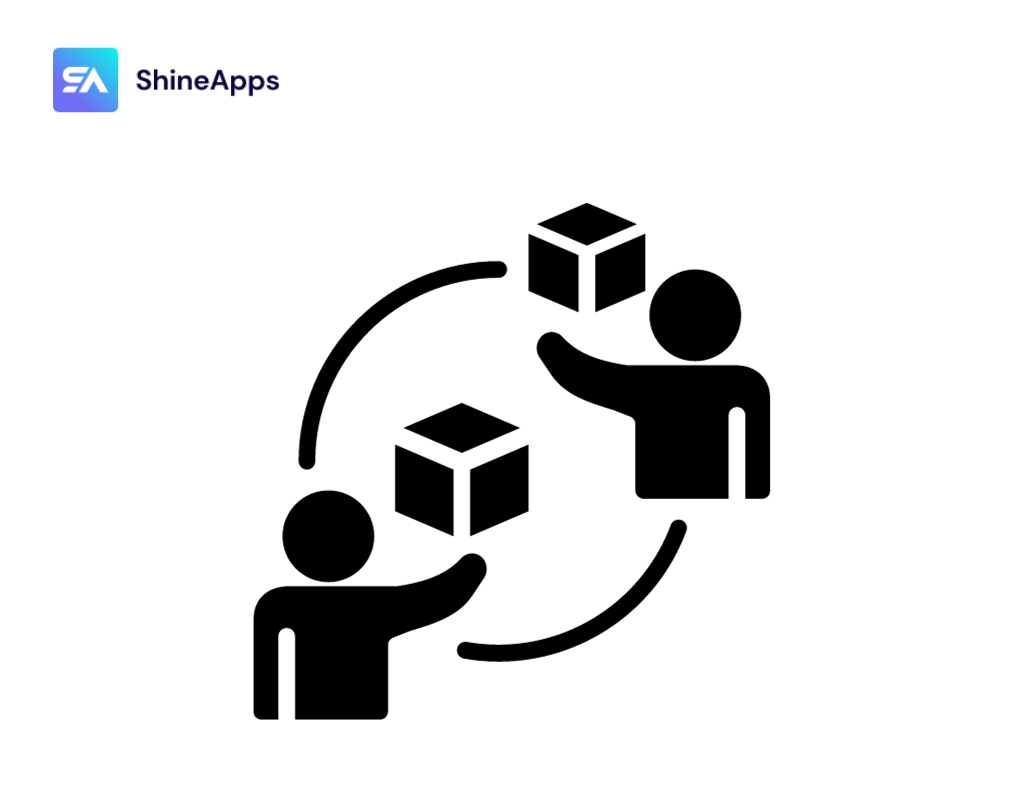eCommerce merchandising is the art and science of presenting and promoting products in online stores to optimize the customer shopping experience, increase sales, and enhance brand reputation. Here, we’ll explore the key principles and strategies behind eCommerce merchandising, allowing you to grow your online store for peak performance.
What is eCommerce Merchandising?

eCommerce merchandising is the art of strategically showcasing and promoting your products on your website to ensure they are easily discoverable, capture customer interest, and ultimately drive conversions and revenue.
While traditional merchandising in physical stores involves placing products in strategic locations to encourage purchases (like placing cold drinks next to pizza shelves in a supermarket), the online landscape operates differently. In the digital realm, customers often browse products one at a time.
Therefore, eCommerce merchandising goes beyond physical placement and focuses on optimizing the online shopping journey. It aims to help customers quickly and conveniently find the products they desire, and perhaps even discover additional items of interest, regardless of how they initially land on your website.
Components Of Ecommerce Merchandising
An effective ecommerce merchandising strategy involves several crucial components that work in harmony to drive sales and enhance the customer experience:
1. Segmentation and Personalization

Tailoring product recommendations, content, and promotions based on customer data is essential for customer satisfaction and loyalty. Personalization creates a deeper connection with customers, improving their shopping experience and encouraging repeat purchases.
2. Product Information Management

Accurate and comprehensive product information is the foundation of successful ecommerce merchandising. This includes detailed product descriptions, technical specifications, pricing details, and high-quality images and videos. Consistency across all channels is key.
3. Visual Merchandising
Similar to physical retail window displays, visual merchandising in ecommerce aims to attract and engage customers. Using strategic product placement and appealing visuals, you can guide the customer journey on your website, creating an immersive shopping experience.
4. Search Engine Optimization (SEO)

SEO is integral to ensuring that your products are discoverable by the right customers. This involves optimizing product descriptions, meta tags, URLs, and other content with relevant keywords to improve visibility on search engines.
Incorporating features like autocomplete with Natural Language Processing (NLP) algorithms can enhance the search experience and drive sales.
5. User Experience (UX)
Providing a seamless and user-friendly online store is critical for a positive shopping experience. This includes easy navigation, fast loading speeds, responsive design, and a streamlined checkout process. A positive UX reduces cart abandonment rates and increases conversions.
Implementing dynamic filters and facets, guided by machine learning search and discovery platforms, can improve the shopping experience and boost average order values.
How to apply eCommerce Merchandising strategies
Now that we, Shineapps have highlighted the crucial components of eCommerce merchandising, let’s dive into practical steps to implement it. We’ll keep it practical and engaging, providing step-by-step tips with real-life examples to guide you through the process.
1. Site Layout, Design and Structure

The design and structure of your eCommerce website play a critical role in determining its credibility and, ultimately, its success in driving sales and revenue. Research has shown that a visually appealing website not only influences credibility but also impacts consumer decisions. Here are three key considerations when designing your site:
- Clean Design: The aesthetics and design elements of your website contribute to your brand’s personality and humanize your online presence. This visual appeal can attract and engage potential customers.
- Clear Navigation: Beyond visual appeal, your website’s structure and navigation must be user-friendly. Visitors, even those new to your site, should find it easy to navigate and locate the information or products they seek.
- Mobile Responsiveness: With a growing number of customers making purchases via mobile devices, your website must be effortlessly accessible on smartphones. Ensuring mobile responsiveness is crucial, as it caters to a large portion of your audience.
2. Homepage Layout
Your homepage is the virtual face of your online store and is often the first point of contact with potential customers. It’s where you have the opportunity to make a strong first impression and communicate who you are and what you offer. Here are some practical tips for optimizing your homepage:
- Clear Brand Introduction: Start by succinctly explaining what your products or brand represent. Use a brief tagline that conveys your brand’s essence and value proposition.
- Visual Appeal: Utilize captivating images and visuals that align with your brand identity. These visuals should instantly charm and engage your visitors.
3. Entice your visitors’ hearts with hot deals
Consider providing discounts, such as a first-time shopper discount, seasonal promotions, free shipping codes, or bundled offers, all prominently displayed on your homepage.
A prime example of this strategy is GAP’s homepage, which prominently features attractive deals, discounts, and special offers. These are showcased through eye-catching banners and toggled pop-ups, ensuring that visitors can’t overlook these enticing discounts.

The effectiveness of this strategy lies in its simplicity. Everyone appreciates a good deal, and by showcasing them prominently on your homepage, you can capture the attention of potential customers and entice them to explore further.
4. Use customers’ review
To enhance your marketing efforts, it’s crucial to leverage customer reviews and support your claims with third-party evidence. This includes social proof, such as customer reviews and authority proof, like media reviews of your products.
You can also utilize various types of proof, including reviews, testimonials, visitor or sales statistics, and links to your brand’s social media pages to demonstrate your popularity and credibility.
Lastly, ensure you include clear calls-to-action (CTAs) at the end of each section to guide your visitors through the purchasing funnel. Pay close attention to the visual layout and spacing between images to create an appealing and user-friendly experience.
5. Social is the new merchandising

Social commerce is becoming increasingly vital within the eCommerce industry. It involves integrating reviews, ratings, and linking to social networking sites to better understand customer preferences and expand the reach while improving conversion rates.
Social merchandising focuses on capturing the attention of potential customers and providing online shoppers with a sense of validation through the influence of Key Opinion Leaders (KOLs) or social connections. This approach leverages social connections to enhance the shopping experience.
Online stores can use social plugins for friend referrals, making it easier for customers to share and shop through social media.
6. Product Layout
Optimizing the product layout on your eCommerce website is crucial for influencing the customer experience and, consequently, their purchase behavior. Think of the product layout as your digital storefront. Here are some recommendations to enhance the user experience:
- Grid-Based Layout: Utilize a grid-based layout for your product display, as it scales well, optimizes white space, and offers a clean and visually appealing look that attracts and retains visitors.
- Visible Images: Ensure product images are unobstructed, placed on a clean background, and of high quality. Clear and prominent visuals make the product the focal point of the layout.
- Incorporate Videos: Videos provide an engaging shopping experience and boost customer confidence. Consider adding videos to your layout to drive conversions and increase the average order value.
- Descriptive Text: Alongside visuals, include informative and compelling product descriptions. Effective copy helps customers understand and connect with the product and your brand.
- CTAs (Call to Action): Strategically place CTAs throughout your layout to guide users through the purchasing journey. Use accent colors and compelling language to capture attention and lead visitors towards conversions.
7. Cross merchandising

Cross-merchandising, also known as cross-selling, is the practice of displaying related products together on the same page in an online store. This technique makes shopping more convenient for customers by showing items they may need in one place, saving them time and suggesting add-on purchases.
Cross-merchandising is effective in organizing products as they are used and can also highlight higher-quality items. It is presented through techniques such as product recommendations, complementary products, trending items, visually similar products, and personalized styling suggestions, allowing brands to connect with customers effectively.
Current Trends in eCommerce Merchandising
Incorporating the latest trends in eCommerce merchandising into your marketing strategy can significantly enhance your online store’s performance. Here are the current trends that you should be aware of and implement to improve your key performance indicators (KPIs):
1. Focus on Personalization

- Customize the Shopping Experience: Tailor your website to individual customer preferences and behavior. Implement AI-driven recommendation engines to suggest products based on their browsing and purchase history.
- Dynamic Pricing: Use dynamic pricing strategies to offer personalized pricing based on factors like location, past behavior, or real-time demand. This not only caters to price-sensitive customers but also maximizes profits.
2. Apply UGC (User-Generated Content)
- Incorporate Customer Reviews: Display customer reviews, ratings, and testimonials on product pages to build trust and influence purchase decisions.
- Encourage User-Generated Content: Actively seek out and encourage customers to share their experiences and feedback. User-generated content adds authenticity to your brand and products.
3. Visual Storytelling

- Use Compelling Visuals: Enhance your product listings and content with high-quality images, infographics, and other visual elements that captivate and inform potential buyers.
- Embrace Video Content: Incorporate product demonstration videos and customer testimonials. Videos can provide a deeper connection with your audience and drive higher conversion rates.
4. Optimize for Mobile
- Responsive Design: Ensure that your eCommerce website and product pages are responsive and mobile-friendly. A seamless mobile experience is essential in the current eCommerce landscape.
- Mobile Checkout: Simplify the checkout process for mobile users. Implement mobile payment options and address any issues that could lead to cart abandonment.
In Conclusion
Beyond the basics of eCommerce merchandising, there are many opportunities to create shopping experiences that resonate with your audience, drive sales, and nurture customer loyalty. Keep experimenting, testing, and refining your strategies to stay ahead of the curve and continue to grow your eCommerce business.



